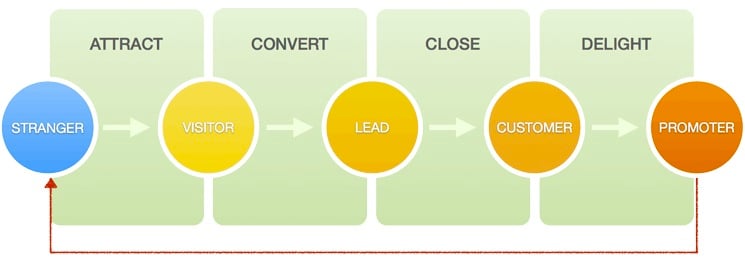
Today’s Inbound Marketing landscape calls for a consistent flow of diverse campaigns, aimed at supporting businesses to achieve a variety of goals and objectives, set for a period of time ahead (annual, quarterly, yearly, etc.) Since we are still at a relatively early stage of 2014, when most of the budgets, plans and strategies for lead generation/nurturing activities are being executed, it’s a good idea to once again go back to the basics. Accordingly, we will remind ourselves of the eternally important fundamentals of a successful Inbound Marketing campaign – from planning to execution.

Phase 1: Strategy and Planning
In the language of Inbound Marketing and campaigns, strategy refers to your ability to apply business intelligence in practice. In other words, it’s an integral component of any promotional activity, helping you build a clearer and more targeted approach for your next soon-to-be-executed campaign.
To ease your way through the planning stage, we’ve developed a series of universal questions that fit any type of a planned Marketing initiative. Go ahead and add them to your company’s regular “Inbound Marketing Campaigns” guideline. Fill it out with suitable answers for every upcoming campaign, and – voila – you have your Strategy phase fully optimised.
1. Who are we targeting?
Think of an Inbound Marketing campaign as a way for your brand to send a particular message to an audience. Now here comes the next important question: Would you prefer your message to be “shouted” at a random kind and number of recipients, or would you rather send it to a pre-defined, limited but relevant audience? Yes, it might sound trivial, but targeting is not only important; it’s at the core essence of an Inbound Marketing campaign’s success. When it comes to methodology, we’ve always been keen admirers of developing Buyer Personas.
2. What do we want to achieve?

Again, you might call it a cliche, but there’s definitely a reason why setting the right goals is such a vital element of executing victorious campaigns. A smart Marketer will align any campaign’s goals with the overall Inbound Marketing objectives of the company, such as increasing brand awareness, generating more leads, enhancing lead nurturing and ultimately – getting more customers. However, a great Marketer will rather work on a list with particular goals for each campaign, making sure that they are specific, measurable, attainable, relevant and time-bound (or the so-called SMART goals).
3. Which types of content are we developing?
Once you’ve answered the “whom” and “why” questions, it’s time to pay attention to a series of “how”-s. In the era of Content Marketing, it goes without saying that an Inbound Marketing campaign spins around content. Therefore, keeping in mind the listed goals, figure out what would be the most suitable content assets with which to map those goals.
4. Through which channels do we want our content distributed?
The answer to that question goes back to targeting, hence is tightly related to knowing your recipients really well. What are their interests? Where do they tend to reside most? etc. Additionally, it’s always a good idea to look back at previous campaigns and evaluate which were the channels that resonated best with the campaign’s goals.
5. How should we enhance the visibility of our campaign assets?
As we’ve already described in our article on the pillars of inbound marketing – Search, or the “crown” of the Inbound Marketing tree is an aspect you should definitely avoid underestimating. Some of the crucial elements that fall into the SEO category are consideration of Keywords, Link Building strategies and PPC (pay-per-click)/ Adwords investments.
6. How will we track the results?
The planning phase of your successful inbound marketing campaigns requires you to develop some smart tracking techniques as well. You will want to know how each content element performs in real time in order to obtain a more precise overview, when reaching the final stage of your campaign – Evaluation. For example, a proven successful practice for measuring results is via tracking URLs.
7. How to navigate our prospects towards optimised conversion rates
Now, this last question from the planning phase is definitely not an easy one. Its answer is fully dependant on the goals of the campaign, the nature of the message, the enclosed CTAs (call-to-action) and of course – the distribution channels. No matter the details, however, your ultimate intention will always be around generating more profit, by either acquiring new customers or by nurturing your relationship with existing ones. In other words, you will always have to develop a way to steer the prospect’s journey towards the desired direction. Nothing will help you more in achieving that goal better than developing successful Landing Pages, designed to suit a specific campaign’s lead nurturing purposes.
Phase 2: Execution
Assuming the above mentioned Strategy Phase has been deployed successfully, the only missing ingredient left for turning the execution phase into “a piece of cake” is Marketing Automation. Marketing Automation is undoubtedly the answer to more and better leads, improved Marketing productivity and increased conversion rates. No wonder that, as stated in the “B2B Marketing Automation Trends 2014” report, 53% of B2B Marketers are actively using the technology.
Phase 3: Evaluation
After the campaign has been executed and its time frame - ended, there comes the time to answer the last question: "Was it a success?" The key to answering that question shouldn't be hidden that far away - simply go back to your goals and synchronise them with your Inbound Marketing's campaign results.
Drawing the bottom line - is it time for celebration or did you miss filling a gap in your strategy vs. execution phase?


